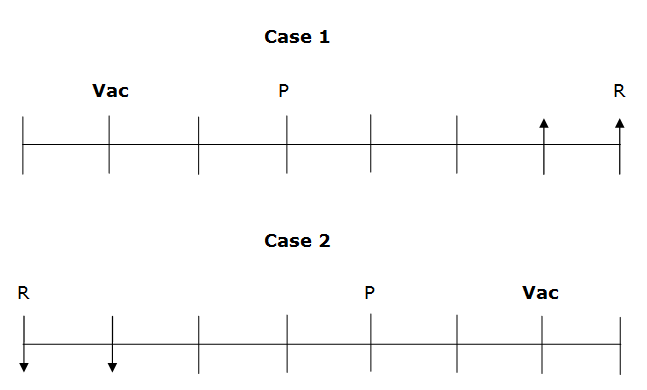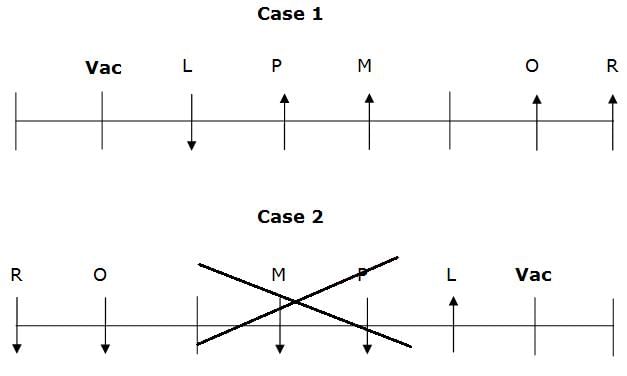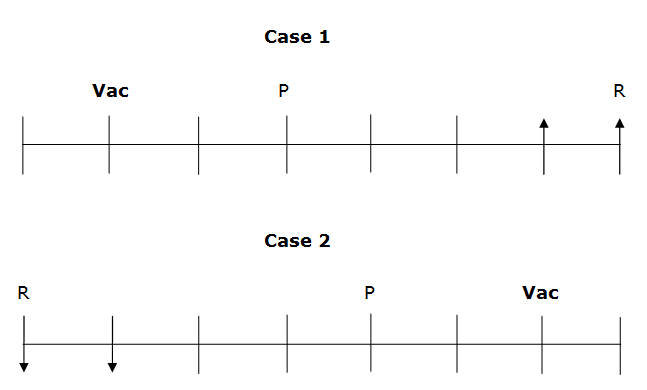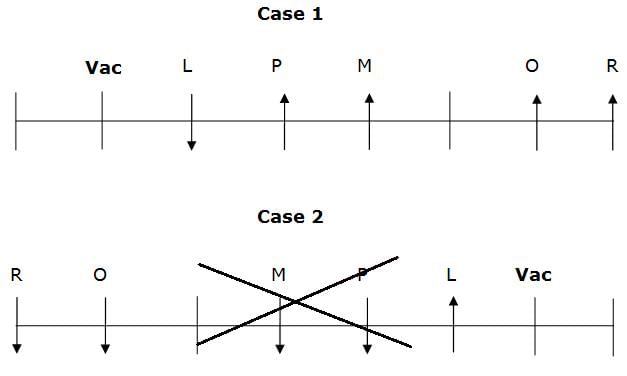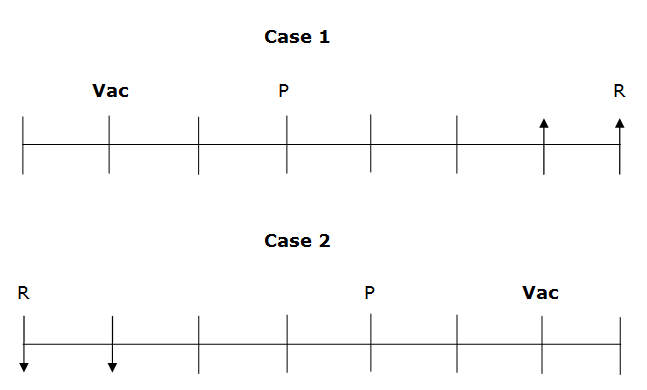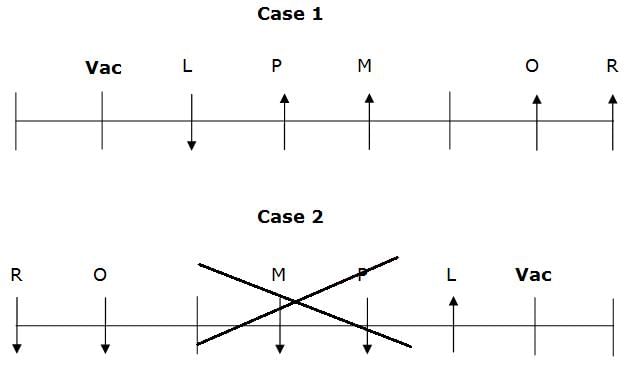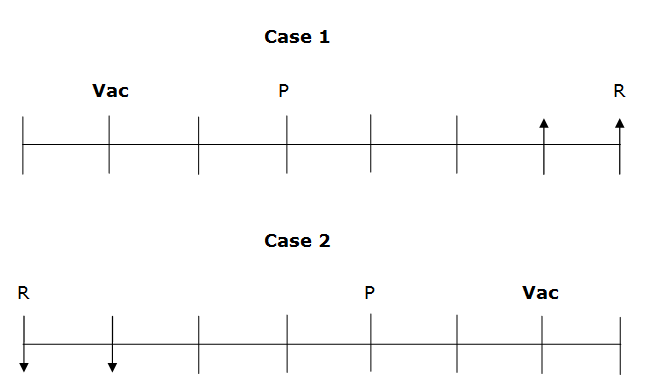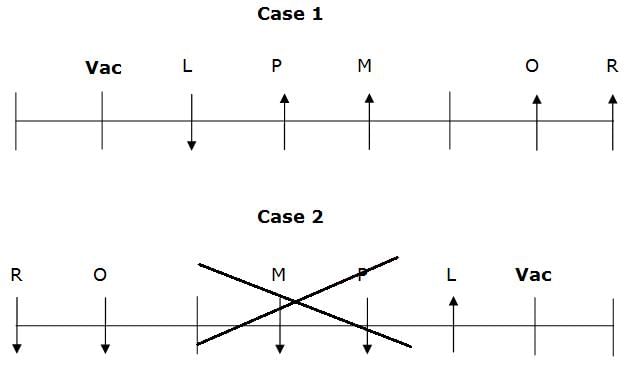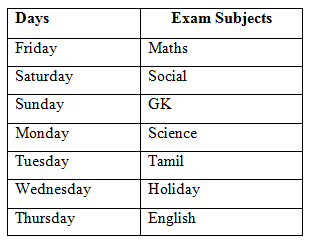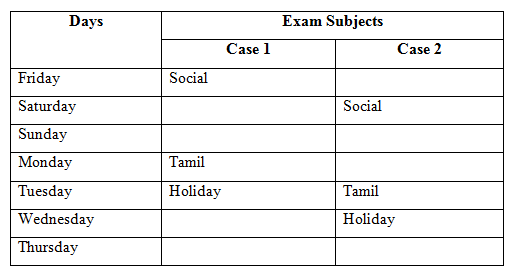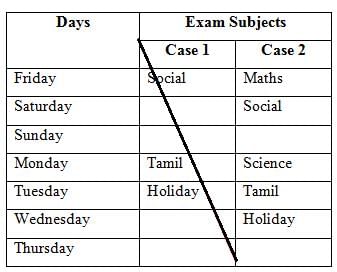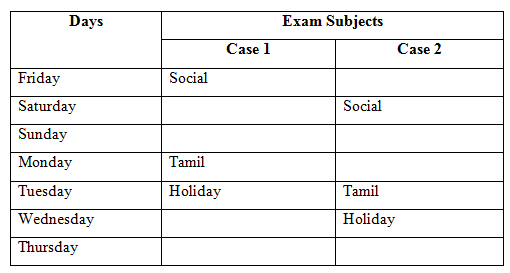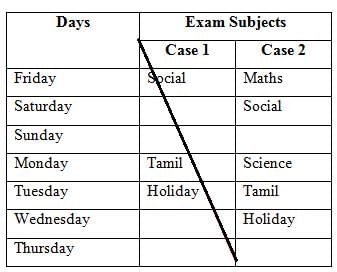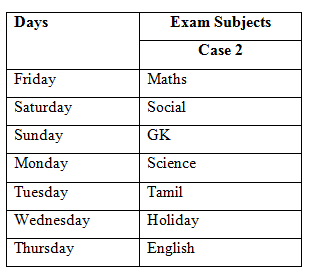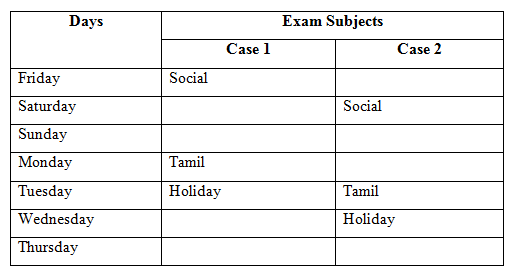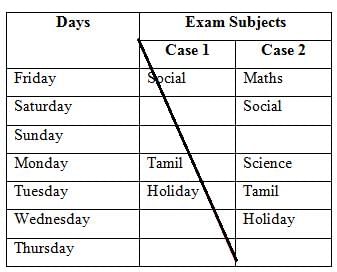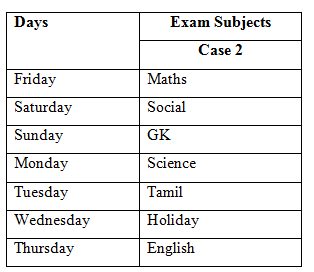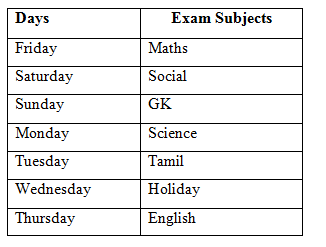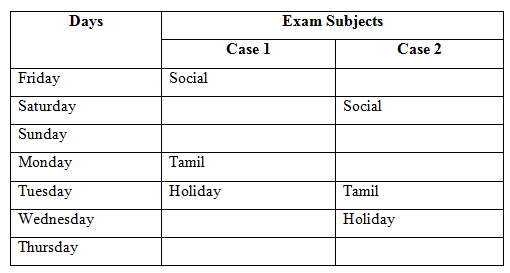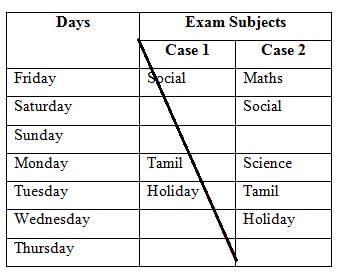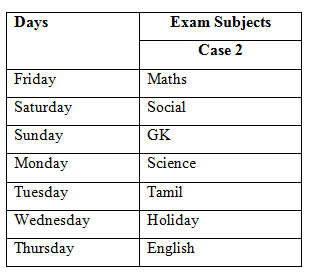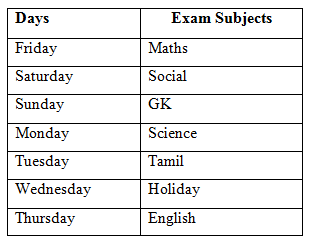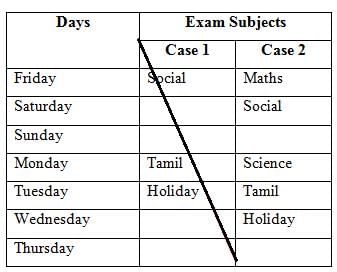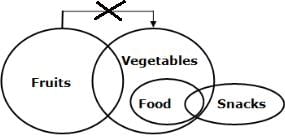Test: Reasoning Ability - 2 - Bank Exams MCQ
20 Questions MCQ Test - Test: Reasoning Ability - 2
Directions: Study the following information carefully and answer the questions given below.
Seven persons L, M, N, O, P, Q and R are seated in a linear row having eight seats. Some of them are facing towards north while some of them face south such that not more than 4 persons face the north direction. P sits fourth to the left of R, who sits at an extreme end. Immediate neighbour of R face same direction as R. The vacant seat is second either from the right end or left end of the line. Neither P nor R sits next to the vacant seat. O sits second to the right of M and is an immediate neighbour of R. P faces the same direction as M while the immediate neighbours of P faces opposite direction ( if one neighbour faces south, the other faces north and vice versa). L, who is an immediate neighbour of P faces south. Q sits third to the left of L. N and Q faces same direction.
Q. How many persons face north direction?
Directions: Study the following information carefully and answer the questions given below.
Seven persons L, M, N, O, P, Q and R are seated in a linear row having eight seats. Some of them are facing towards north while some of them face south such that not more than 4 persons face the north direction. P sits fourth to the left of R, who sits at an extreme end. Immediate neighbour of R face same direction as R. The vacant seat is second either from the right end or left end of the line. Neither P nor R sits next to the vacant seat. O sits second to the right of M and is an immediate neighbour of R. P faces the same direction as M while the immediate neighbours of P faces opposite direction ( if one neighbour faces south, the other faces north and vice versa). L, who is an immediate neighbour of P faces south. Q sits third to the left of L. N and Q faces same direction.
Q. How many persons are seated between M and N?
Directions: Study the following information carefully and answer the questions given below.
Seven persons L, M, N, O, P, Q and R are seated in a linear row having eight seats. Some of them are facing towards north while some of them face south such that not more than 4 persons face the north direction. P sits fourth to the left of R, who sits at an extreme end. Immediate neighbour of R face same direction as R. The vacant seat is second either from the right end or left end of the line. Neither P nor R sits next to the vacant seat. O sits second to the right of M and is an immediate neighbour of R. P faces the same direction as M while the immediate neighbours of P faces opposite direction ( if one neighbour faces south, the other faces north and vice versa). L, who is an immediate neighbour of P faces south. Q sits third to the left of L. N and Q faces same direction.
Q. Who sits exactly in the middle of the line (excluding vacant seat)?
Directions: Study the following information carefully and answer the questions given below.
Seven persons L, M, N, O, P, Q and R are seated in a linear row having eight seats. Some of them are facing towards north while some of them face south such that not more than 4 persons face the north direction. P sits fourth to the left of R, who sits at an extreme end. Immediate neighbour of R face same direction as R. The vacant seat is second either from the right end or left end of the line. Neither P nor R sits next to the vacant seat. O sits second to the right of M and is an immediate neighbour of R. P faces the same direction as M while the immediate neighbours of P faces opposite direction ( if one neighbour faces south, the other faces north and vice versa). L, who is an immediate neighbour of P faces south. Q sits third to the left of L. N and Q faces same direction.
Q. Which of the following combination represents the persons sitting at the extreme ends of the line?
Directions: Study the following information carefully and answer the questions given below.
Seven persons L, M, N, O, P, Q and R are seated in a linear row having eight seats. Some of them are facing towards north while some of them face south such that not more than 4 persons face the north direction. P sits fourth to the left of R, who sits at an extreme end. Immediate neighbour of R face same direction as R. The vacant seat is second either from the right end or left end of the line. Neither P nor R sits next to the vacant seat. O sits second to the right of M and is an immediate neighbour of R. P faces the same direction as M while the immediate neighbours of P faces opposite direction ( if one neighbour faces south, the other faces north and vice versa). L, who is an immediate neighbour of P faces south. Q sits third to the left of L. N and Q faces same direction.
Q. What is the position of Q with respect to P?
Directions: Study the following information carefully and answer the questions given below.
In a School, exams are conducted on six different subjects namely, Tamil, English, Maths, Science, Social and GK on six different days of the week starting from Friday and ending on Thursday with one day between them being Holiday. Tamil exam was conducted on the third day after Social exam. The holiday was immediately next to the day on which the Tamil exam was conducted. The last day of the week is not a holiday. Only two exams were conducted between Science and Maths, which was conducted on one of the days before Social exam. GK exam was conducted on one of the days before English exam.
Q. Which exam was conducted on Monday?
Directions: Study the following information carefully and answer the questions given below.
In a School, exams are conducted on six different subjects namely, Tamil, English, Maths, Science, Social and GK on six different days of the week starting from Friday and ending on Thursday with one day between them being Holiday. Tamil exam was conducted on the third day after Social exam. The holiday was immediately next to the day on which the Tamil exam was conducted. The last day of the week is not a holiday. Only two exams were conducted between Science and Maths, which was conducted on one of the days before Social exam. GK exam was conducted on one of the days before English exam.
Q. How many exams were conducted before GK exam?
Directions: Study the following information carefully and answer the questions given below.
In a School, exams are conducted on six different subjects namely, Tamil, English, Maths, Science, Social and GK on six different days of the week starting from Friday and ending on Thursday with one day between them being Holiday. Tamil exam was conducted on the third day after Social exam. The holiday was immediately next to the day on which the Tamil exam was conducted. The last day of the week is not a holiday. Only two exams were conducted between Science and Maths, which was conducted on one of the days before Social exam. GK exam was conducted on one of the days before English exam.
Q. Which exam was conducted immediately between the GK and Social exams?
Directions: Study the following information carefully and answer the questions given below.
In a School, exams are conducted on six different subjects namely, Tamil, English, Maths, Science, Social and GK on six different days of the week starting from Friday and ending on Thursday with one day between them being Holiday. Tamil exam was conducted on the third day after Social exam. The holiday was immediately next to the day on which the Tamil exam was conducted. The last day of the week is not a holiday. Only two exams were conducted between Science and Maths, which was conducted on one of the days before Social exam. GK exam was conducted on one of the days before English exam.
Q. Which of the following days is a Holiday?
Directions: Study the following information carefully and answer the questions given below.
In a School, exams are conducted on six different subjects namely, Tamil, English, Maths, Science, Social and GK on six different days of the week starting from Friday and ending on Thursday with one day between them being Holiday. Tamil exam was conducted on the third day after Social exam. The holiday was immediately next to the day on which the Tamil exam was conducted. The last day of the week is not a holiday. Only two exams were conducted between Science and Maths, which was conducted on one of the days before Social exam. GK exam was conducted on one of the days before English exam.
Q. Which exam was conducted immediately after the Science exam?
Directions: In each of the following questions, relationship between different elements is shown in the statements followed by two conclusions. Find the conclusion which is definitely true.
Give answer:
(a) If only conclusion I follows.
(b) If only conclusion II follows.
(c) If either conclusion I or II follows.
(d) If neither conclusion I nor II follows.
(e) If both conclusions I and II follow.
Statements:
P > Q = R ≥ S > T
Conclusions:
I). P > S
II). T < R
Directions: In each of the following questions, relationship between different elements is shown in the statements followed by two conclusions. Find the conclusion which is definitely true.
Give answer:
(a) If only conclusion I follows.
(b) If only conclusion II follows.
(c) If either conclusion I or II follows.
(d) If neither conclusion I nor II follows.
(e) If both conclusions I and II follow.
Statements:
N > O < R = L ≤ D
Conclusions:
I). R < D
II). R = D
Directions: In each of the following questions, relationship between different elements is shown in the statements followed by two conclusions. Find the conclusion which is definitely true.
Give answer:
a) If only conclusion I follows.
b) If only conclusion II follows.
c) If either conclusion I or II follows.
d) If neither conclusion I nor II follows.
e) If both conclusions I and II follow.
Statements:
A < B > C ≤ D = E
Conclusions:
I). A > C
II). D < B
How many digits are there in the number ˜735186™ each of which remains in its original position when all the digits are arranged in ascending order within the number from left to right?
Among S, K, V, A and R having different height, K is taller than R and S, who is not the shortest and shorter than V and A, who is not the tallest. Who among the following is the shortest?
Directions: Read both the conclusions and then decide which of the given conclusions logically follows from the given statements disregarding commonly known facts.
Give Answer:
(a) If Only conclusion I follows.
(b) If Only conclusion II follows.
(c) If either conclusion I or II follows.
(d) If Neither conclusion I nor II follows.
(e) If both conclusions I and II follow.
Statements:
Only a few Fruits are Vegetables
All Foods are Vegetables
Some Foods are Snacks
Conclusions:
I). Some Vegetables are Fruits is a possibility
II). All Fruits can never be Vegetables
Directions: Read both the conclusions and then decide which of the given conclusions logically follows from the given statements disregarding commonly known facts.
Give Answer:
(a) If Only conclusion I follows.
(b) If Only conclusion II follows.
(c) If either conclusion I or II follows.
(d) If Neither conclusion I nor II follows.
(e) If both conclusions I and II follow.
Statements:
Only a few Apples are Grapes
All Grapes are Oranges
All Apples are Guava
Conclusions:
I). Only a few Grapes are Apples
II). Some Apples are not Oranges
Directions: Read both the conclusions and then decide which of the given conclusions logically follows from the given statements disregarding commonly known facts.
Give Answer:
(a) If Only conclusion I follows.
(b) If Only conclusion II follows.
(c) If either conclusion I or II follows.
(d) If Neither conclusion I nor II follows.
(e) If both conclusions I and II follow.
Statements:
Some Chairs are Tables
All Beds are Tables
No Table is a Floor
Conclusions:
I). All Floors can never be Bed
II). Some Beds being Chair is a possibility
Directions: Read both the conclusions and then decide which of the given conclusions logically follows from the given statements disregarding commonly known facts.
Give Answer:
(a) If Only conclusion I follows.
(b) If Only conclusion II follows.
(c) If either conclusion I or II follows.
(d) If Neither conclusion I nor II follows.
(e) If both conclusions I and II follow.
Statements:
All Lotus are Rose
No Lilly is Jasmine
Some Lotus are Lilly
Conclusions:
I). All Lotus can never be Jasmine
II). Some Lilly are Lotus is a possibility
How many meaningful English words can be formed with the second, fifth and eighth letters of the word SUBSCRIBER using each letter only once in each word?



